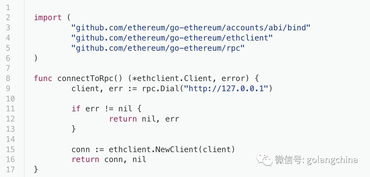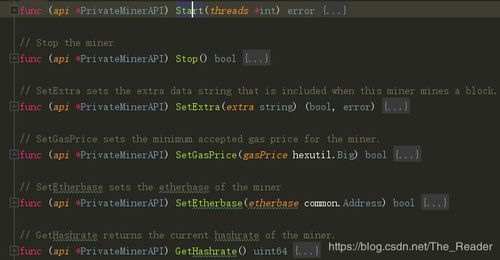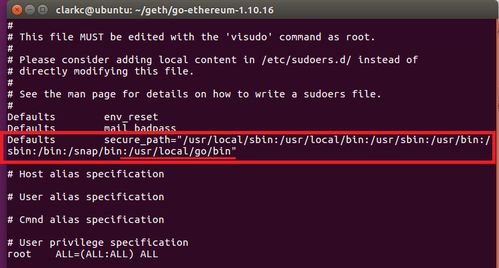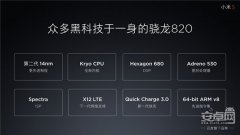
- 系统大小:60KB
- 更新时间:2024-11-23
- 界面语言:简体中文
- 授权方式:5G系统之家
- 推荐星级:
以太坊(Ethereum)的英文代码是 ETH。这是以太坊网络上的原生加密货币,通常用于交易和支付网络上的费用。请注意,ETH是加密货币的代码,而Ethereum本身是一个去中心化的区块链平台,支持智能合约和去中心化应用(DApps)的开发。
Introduction to Ethereum Coding: A Comprehensive Guide
Tags: Ethereum, Blockchain, Smart Contracts, Solidity, DApp Development

Ethereum, as a decentralized platform, has revolutionized the way we think about digital currencies and applications. With its innovative features like smart contracts, Ethereum has become a preferred choice for developers worldwide. In this article, we will delve into the world of Ethereum coding, exploring the basics of smart contracts, the Solidity programming language, and the development of decentralized applications (DApps).
Understanding Ethereum and Smart Contracts

Tags: Ethereum, Smart Contracts, Blockchain Technology

Ethereum is an open-source, public blockchain platform that enables the creation of decentralized applications and smart contracts. Unlike Bitcoin, which is primarily a digital currency, Ethereum focuses on building a platform for decentralized applications and services.
Smart contracts are self-executing contracts with the terms of the agreement directly written into lines of code. They run on the Ethereum network and are immutable, meaning once deployed, they cannot be changed. This feature makes smart contracts highly secure and reliable.
Getting Started with Solidity
Tags: Solidity, Programming Language, Ethereum Development
Solidity is the primary programming language used for writing smart contracts on the Ethereum platform. It is a contract-oriented, high-level language that is influenced by languages like JavaScript, Python, and C .
To start coding in Solidity, you need to set up your development environment. This includes installing the Ethereum client (e.g., Geth), a text editor, and a compiler (e.g., solc). Once you have your environment ready, you can start writing your first smart contract.
Writing Your First Smart Contract
Tags: Smart Contract, Solidity, Ethereum Development
Let's write a simple smart contract that stores a value and allows users to update it. This example will help you understand the basic structure and syntax of Solidity.
```solidity
pragma solidity ^0.8.0;
contract SimpleStorage {
uint256 public storedData;
function set(uint256 x) public {
storedData = x;
}
function get() public view returns (uint256) {
return storedData;
}
In this example, we have a contract named `SimpleStorage` that has a public variable `storedData`. The `set` function allows users to update the value of `storedData`, and the `get` function returns the current value.
Deploying Your Smart Contract
Tags: Ethereum, Smart Contract Deployment, Geth
Once you have written your smart contract, you need to deploy it to the Ethereum network. This process involves compiling your contract using a Solidity compiler and then using the Ethereum client (e.g., Geth) to deploy the contract to the network.
To deploy the `SimpleStorage` contract, you can use the following command:
```bash
truffle migrate --network development
This command will compile your contract and deploy it to the Ethereum development network.
Interacting with Your Smart Contract
Tags: Ethereum, Smart Contract Interaction, DApp Development
After deploying your smart contract, you can interact with it using a web3 library or a blockchain explorer like Etherscan. Let's see how to interact with the `SimpleStorage` contract using the web3.js library.
```javascript
const Web3 = require('web3');
const web3 = new Web3('http://localhost:8545');
const contractAddress = '0x...'; // Replace with your contract address
const contractABI = [
// ... Replace with your contract ABI
const contract = new web3.eth.Contract(contractABI, contractAddress);
// Set value
contract.methods.set(10).send({ from: '0x...' }, (error, result) => {
if (error) {
console.error(error);
} else {
console.log(result);
}
// Get value
contract.methods.get().call((error, result) => {
if (error) {
console.error(error);
} else {
console.log(result);
}
In this example, we have connected to the Ethereum development network using web3.js and interacted with the `SimpleStorage` contract by setting and getting the value.
Conclusion
Tags: Ethereum, Smart Contracts, DApp Development
In this article, we have explored the basics of Ethereum coding, including smart contracts, the Solidity programming language, and DApp development. By following this guide, you can start writing and deploying your own smart contracts on the Ethereum network. Happy coding!









